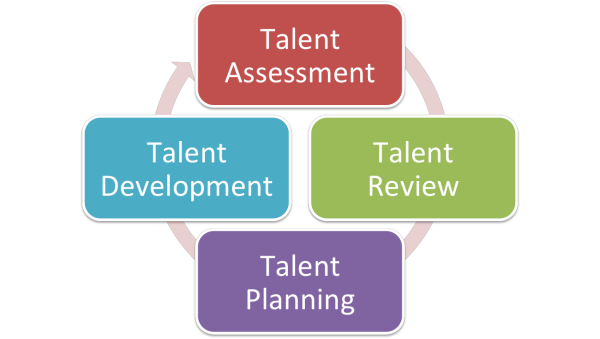Four Development Actions to Help Employees Grow, Plus Five Tips for Creating Effective Employee Development Plans
 An employee development plan can help your employee close the gap between where they are now and where they want to be. Managers can play a crucial role in creating these plans and helping their employees succeed—especially if they maximize the impact of their plans by including practical development actions and following some best practices for development planning.
An employee development plan can help your employee close the gap between where they are now and where they want to be. Managers can play a crucial role in creating these plans and helping their employees succeed—especially if they maximize the impact of their plans by including practical development actions and following some best practices for development planning.
What Is Development Planning?
Development planning is the process of creating a personalized development plan for an employee. An employee development plan is an action plan aimed at empowering an employee to achieve their career goals.
Development plans are often focused on addressing a gap or shortcoming to help an employee get back on track and improve their performance. In these cases, they may also be referred to as a performance improvement plan.
The Importance of Development Planning
Development planning is an important means of turning performance problems into opportunities for growth.
Empower growth.
Gartner research reveals that employees want “growth opportunities and to feel valued, trusted, and empowered.” A development plan is the perfect way to show employees you’re invested in their success. You can communicate how much you value the employee and use the development plan as a practical tool for empowering the employee to achieve more in their career. This benefits employees individually and benefits your company as a whole.
Boost morale.
Negative feedback without a plan to move forward will likely leave employees discouraged. When an employee is struggling, a development plan is a positive intervention that empowers them to improve. This plan of action can boost the employee’s confidence and morale as they proactively overcome challenges that may be holding them back.
Improve retention.
Supporting employees’ growth and success is also a key way of improving employee retention. A 2019 LinkedIn survey found that 94 percent of employees would stay at a company longer if the company invested in their learning. Employees want to know they’re making progress in their careers—not just putting in work with no feedback or means of moving forward. When they feel they have a bright future at your company, employees are far more likely to stick around.
→ Learn more strategies for improving employee retention using development planning and succession planning: Download our Ultimate Guide to Combating Talent Shortages.
Four Types of Development Actions
Development actions are the specific action steps that an employee will take, in support of a development goal, to achieve the desired behavior change. Since development plans are action plans, you need to consider what type of action should be taken to achieve the desired outcome. Let’s look at four types of interventions you can include in a development action plan:
Promote educational self-development.
One intervention that can help an employee advance their skills or improve their performance is educational self-development. Self-development actions include independent educational activities, such as:
- Reading: Employees can read selected books that relate to a development goal to increase knowledge, gain a new perspective, or learn the basics of an unfamiliar field. There is a wealth of great resources available, both in print and audiobook, that relate to a variety of hard and soft skills.
- Observing others: Shadowing someone who has considerable expertise in the skill or area where the employee needs to grow and develop can be extremely valuable. For example, an employee who is new to a position and is struggling with an unfamiliar task could connect with a seasoned professional in a similar position who can show them how they approach the task successfully.
- Attending events: Employees can also attend educational events to expand their knowledge. This might include professional association meetings or conferences, for example. These can be great opportunities to keep up to date with the latest thinking and trends in your field and to renew the employee’s passion for their work.
Increase feedback and coaching.
If you’re creating a development plan for an employee you manage, chances are, you’re already offering that employee feedback on their performance. However, if you identify a specific area where an employee needs to grow, you may need to make feedback more frequent and detailed for a time to help the employee advance their skills.
You can also pull in others, such as trusted peers or colleagues, to offer feedback or coaching. If an employee is working on a customer-facing issue, consider asking customers for their firsthand feedback on the employee’s performance. Getting this input from others can be very valuable if an employee is open to listening and committed to taking action to improve.
Provide opportunities for skill practice.
Employees can also learn through practice. Practice may not make perfect, but it can certainly lead to improvement. Employees can use their typical work as practice, but you can also provide additional opportunities for practice.
Consider providing employees with sample projects to work through that mirror the real work they do or are planning to do once they are qualified. This allows employees to work on their development needs in a safe environment that doesn’t carry the same pressure as real-life scenarios do. Be sure to offer detailed feedback on this sample work that employees can apply to future tasks.
Assign developmental projects and tasks.
If an employee is working on developing a new skill, consider assigning a project to the employee that will allow them to exercise this new skill. For instance, you may want to give an employee the opportunity to take charge of a project if they’re working on leadership skills. If an employee is working on improving a technical skill, assign them to a task that uses this skill.
Special assignments or projects should be challenging, designed to force an individual out of their comfort zone and stretch their abilities. It is under these conditions that significant development often occurs. It’s no wonder that 85 percent of learning and development professionals expect to see this sort of on-the-job learning continue or increase in the near future.
How to Create a Successful Employee Development Plan
Development plans are as unique as the employees they’re created for, so there’s no one-size-fits-all approach to creating the ideal plan. However, there are some universal tips you can follow during the employee development planning process that will help you create a successful plan for your employee.
1. Include the employee in the process.
We’ve seen that employees want learning and development opportunities, so it makes sense to involve them in the process, allowing them to take an active role in their own growth. Including employees and getting their input as you create their development plans can encourage them to be more invested in the process and maintain confidence as they proactively overcome obstacles.
2. Consider the end goal.
It’s important to start an employee development plan with the end in mind—what do you want the employee to achieve? Make sure the employee shares this goal, and that the goal aligns with the employee’s—and the company’s—long-term success. The steps you implement in your development plan should each be aimed at moving the employee a step closer to achieving this goal.
3. Make it challenging.
The best employee development plan examples will push the employee outside of their comfort zone. Goals should not feel out of reach, but they should be challenging. Research shows that only challenging goals will fully engage your amygdala and frontal lobe in the brain to encourage success. If the end goal seems lofty, consider setting interim goals to help the employee track their progress and celebrate small successes along the way.
4. Provide the necessary support.
An employee development plan shouldn’t just specify what you want the employee to achieve—it should also detail how the employee is to achieve this goal. That means you will need to identify the development action(s) you plan to implement and any tools and resources you plan to offer the employee to help them meet their goal.
5. Plan how you will evaluate success.
It’s also important to think through how you, and the employee, will track their progress and completion of their goal. Specify any deliverables or tasks the employee must complete as part of their development plan. You should also consider how you’ll know when the employee has completed their development plan. Employees should never stop learning and growing, but a development plan focused on a specific area of growth should have some definite checkpoints and finish line involved.
Promote Employee Growth and Development with viaPeople
An employee development plan can be a powerful tool to help employees succeed, and it can create a positive culture of learning and development that drives your whole company forward.
viaPeople’s talent management solutions help HR professionals and managers make the most of the talent in their organizations and encourage growth. Want to learn more about how to tap into the veritable goldmine of talent in your organization from our experts? Read our Ultimate Guide to Combating Talent Shortages.
Share this
You May Also Like
These Related Stories

Development at the Top - Use the 9 Box to Develop Talent in Succession Planning

Case Study: Merging Succession Planning and Career Development to Increase Retention and Development at a Large Pharmaceutical Company


